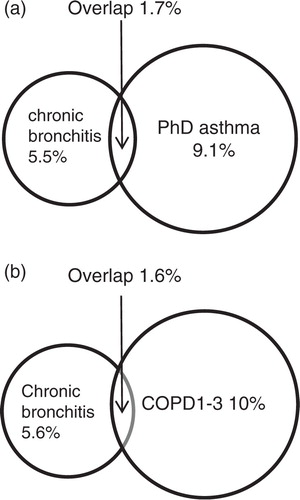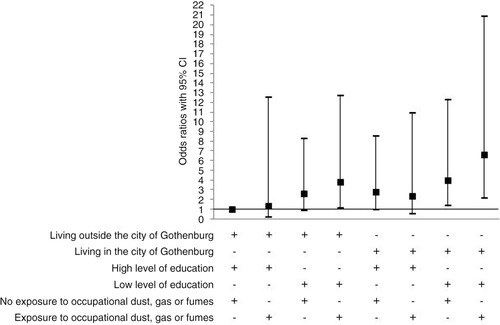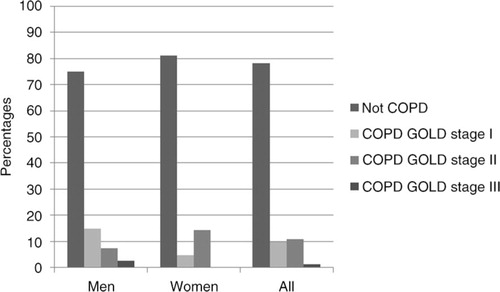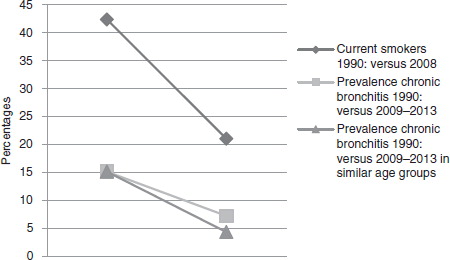Figures & data
Table 1 Background characteristics of the study sample by sex
Table 2 Prevalence (%) of chronic bronchitis and respiratory symptoms by age groups and sex
Fig. 1 (a) Overlap between physician-diagnosed asthma (PhD asthma) and chronic bronchitis. In the total sample, the prevalence of PhD asthma was 10.8% and the prevalence of chronic bronchitis was 7.2% in the total sample. (b) Overlap between chronic bronchitis and chronic obstructive pulmonary disease (COPD). In the total sample, the prevalence of COPD based on GOLD criteria was 11.6% and the prevalence of chronic bronchitis was 7.2%.

Table 3 Prevalence (%) of chronic bronchitis by area of domicile, level of education, current smoking status, smoking exposure using pack-years, and occupational exposure to dust, gas or fumes in men and women and in three age groups
Table 4 Risk factors for chronic bronchitis and respiratory symptoms by using multiple logistic regression analysis
Fig. 3 Risk factors for chronic bronchitis by multiple logistic regressions analysis adjusted for age, area of domicile and exposure to occupational dust, gas or fumes. Odds ratios (OR) with 95% confidence intervals (CI). References category: non-smokers with high level of education, i.e. university, as reference category.

Fig. 4 Multivariate logistic regressions based on the total sampled adjusted for age and current smoking status showing odds ratios with 95% confidence intervals (CI) with chronic bronchitis as dependent variable and a combined variable with area of domicile living outside the city of Gothenburg in the region of West Gothia, high level of education, i.e. university and unexposed to occupational dust, gas or fumes as reference category.



